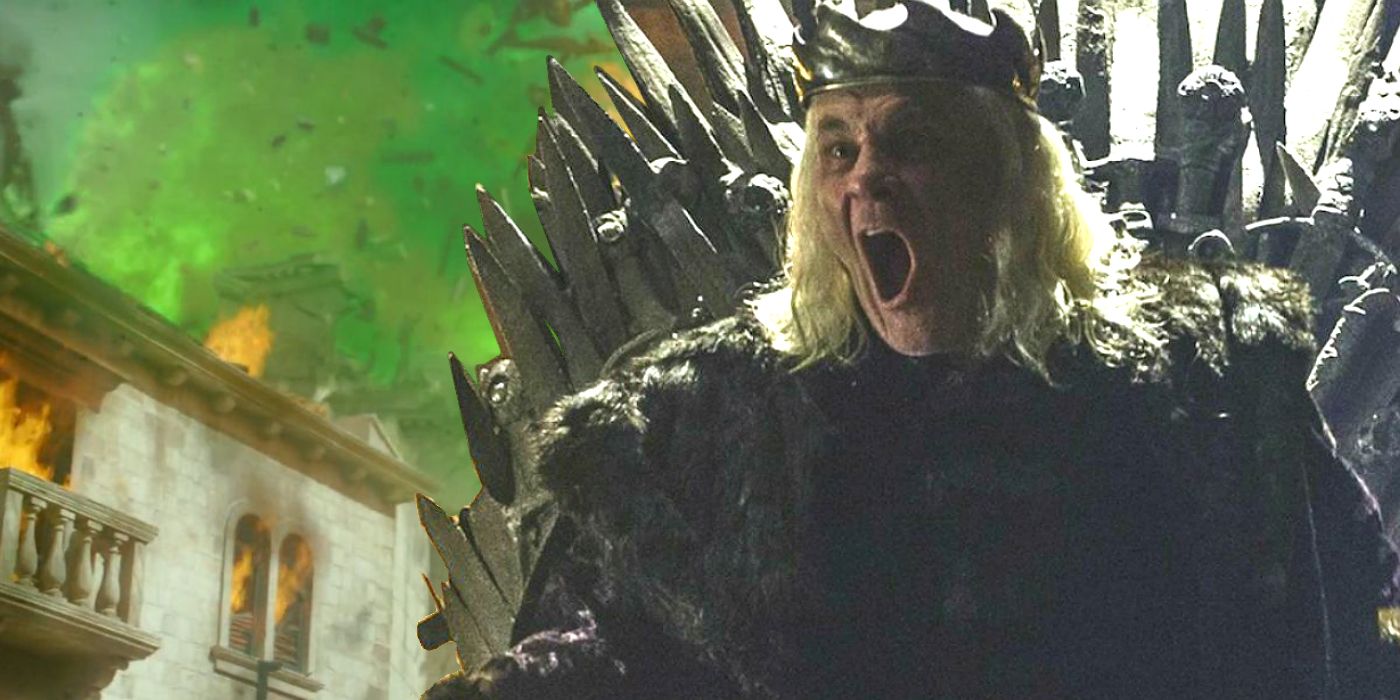Literary Interpretations: The Mad King Got

The mad king got – The phrase “the mad king” has been a recurring theme in literature for centuries, often used to explore the complexities of power, sanity, and the human condition. Shakespeare’s King Lear is a prime example of this trope, with the titular character descending into madness as he grapples with the betrayal of his daughters and the loss of his kingdom.
The character of the mad king can be interpreted in various ways. Some see it as a metaphor for the dangers of unchecked power, while others view it as a representation of the fragility of the human mind. In King Lear, the king’s madness is both a source of tragedy and a catalyst for self-discovery. Through his descent into madness, Lear is forced to confront his own mortality and the futility of his pursuit of power.
Psychological and Emotional Dimensions of Madness
The portrayal of madness in literature often delves into the psychological and emotional dimensions of the condition. Characters like King Lear experience a range of emotions, from rage and despair to moments of lucidity and insight. Their madness can be seen as a manifestation of their inner turmoil, a way of coping with the unbearable weight of their experiences.
The psychological and emotional dimensions of madness are not limited to the mad king trope. Other literary characters, such as Ophelia in Hamlet and Raskolnikov in Crime and Punishment, also grapple with the complexities of mental illness. Through these characters, authors explore the stigma associated with madness, the challenges of living with it, and the potential for redemption and recovery.
Modern Applications

The concept of “the mad king” continues to resonate in modern times, finding contemporary parallels in various individuals and situations. The phrase has been used to describe leaders who exhibit erratic or impulsive behavior, often with disastrous consequences.
Contemporary Examples
- Former US President Donald Trump has been frequently labeled as a “mad king” due to his volatile temperament, inflammatory rhetoric, and disregard for democratic norms.
- North Korean dictator Kim Jong-un has also been likened to a mad king, with his repressive regime and nuclear ambitions raising concerns about his stability.
- The rise of populist leaders worldwide, known for their authoritarian tendencies and appeals to nationalism, has sparked comparisons to the “mad king” archetype.
Cultural and Societal Implications
The use of the phrase “mad king” in modern contexts carries significant cultural and societal implications. It reflects a growing sense of unease and disillusionment with traditional leadership models and the rise of unpredictable and polarizing figures.
- The label “mad king” can be used as a cautionary tale, warning against the dangers of unchecked power and the importance of accountability.
- It also highlights the challenges of navigating an increasingly complex and uncertain world, where traditional sources of authority and stability are being questioned.
- The phrase has become a powerful metaphor for the fragility of democracy and the potential for chaos and destruction when leaders succumb to irrationality and tyranny.
Evolution of the Phrase, The mad king got
The phrase “mad king” has evolved over time to reflect changing cultural and political contexts. In medieval literature, it often referred to rulers who were mentally unstable or possessed by supernatural forces.
- In modern usage, the phrase has broadened to include leaders who may not be clinically insane but who exhibit reckless or destructive behavior.
- The phrase has also been used to critique leaders who prioritize personal ambition over the well-being of their people.
- The evolution of the phrase reflects the changing nature of leadership and the increasing demand for accountability and transparency in the digital age.
The Mad King Aerys II Targaryen, known for his fiery temper and erratic behavior, ruled with an iron fist over the Seven Kingdoms. His reign was marked by paranoia and cruelty, and his madness was reflected in the banners that flew over his castles.
The banners depicted a three-headed dragon, the symbol of House Targaryen, but they were often torn and stained with blood. Game of Thrones banners have become iconic symbols of the show, and they represent the complex and often violent world of Westeros.
The Mad King got his power from dark forces, as he was known to burn people alive and feed their ashes to rats. The rats, in turn, were said to be able to control the minds of men, which is how the Mad King was able to stay in power for so long.
But even the Mad King couldn’t control the rats forever. As the story goes, a group of rebels lured the rats away with cheese, which gave them the opportunity to finally overthrow the Mad King. Read more about the rat and cheese game of thrones.
The Mad King’s reign of terror was finally over.
The Mad King got his wish, in a way. The city was ablaze, and the banners of the Seven Kingdoms flew from the towers. Game of Thrones banners nyc now hung in the place where the Mad King’s own banners had once flown.
But the Mad King was gone, and the city was a ruin.
The Mad King’s reign was marked by tyranny and madness, but even in his darkest moments, he could not have imagined the chaos that would follow his death. As the Seven Kingdoms descended into civil war, a young woman named Rosabell Laurenti Sellers rose to prominence as a fierce warrior and cunning strategist.
Her actions would shape the course of the war and leave an enduring legacy in the annals of Westeros.
The Mad King got his due in the end, his reign of terror finally brought to a close. Yet, his legacy lingered, casting a shadow over the realm. As the wheels of history turned, the story of the Mad King and his reign continued to be told, each telling a different tale.
In the annals of Westeros, the Mad King’s name would forever be etched, a cautionary tale of what could happen when power fell into the wrong hands. And now, with the release of House of the Dragon Season 2 Episode 1 , the Mad King’s story would once again be brought to life, his madness and tyranny revisited for a new generation.